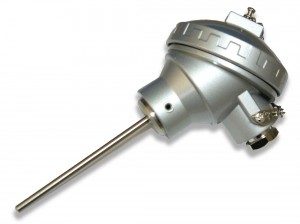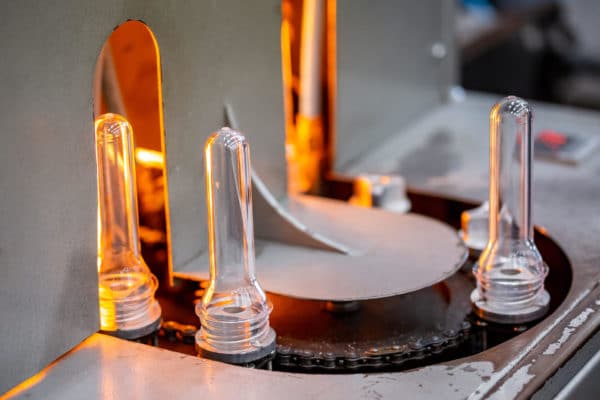How To Check if You Have a Faulty Temperature Sensor
How to Test a Faulty Thermocouple or Resistance Thermometer?
Knowing how to check if you have a faulty temperature sensor in industrial equipment and machinery is crucial for quality, safety and preventing expensive repairs.
If you’re working in an industrial setting, you’re likely using temperature sensors to monitor critical processes.
In this guide, we take you through the symptoms to look out for and how to test a faulty sensor.
As a UK-based manufacturer of industrial temperature sensors, including thermocouples, RTDs, and thermistors, we have the experience and expertise to ensure that your temperature sensors are working correctly.
If you’d like our help fixing your faulty temperature sensor, contact us at 01628 778688 or contact us here.
Contact UsHow to Check a Faulty Temperature Sensor?
Temperature probes are an essential part of many industrial processes. They are used to monitor and control the temperature of various materials, liquids, gases, and solids.
When a temperature sensor fails, it could cause equipment damage, product contamination, and safety hazards.
Related: What is a Temperature Sensor?
How to Know if Your Temperature Sensor is Faulty
Fault finding is an important aspect of any electrical system, and it is crucial to identify and rectify faults to ensure the proper functioning of equipment.
What Are The Symptoms of a Faulty Temperature Sensor?
There are a number of signs that can indicate a faulty temperature sensor. These include:
- The equipment is experiencing intermittent thermocouple failure.
- Instruments are showing “Open Circuit”.
- The temperature gauge on your equipment isn’t reading accurately.
- The equipment stops heating or cooling properly.
- The equipment is overheating.
- The equipment stops working as it should.

Troubleshooting a Faulty Temperature Sensor Steps
Here’s how to fault-find and diagnose various failure types for thermocouples and resistance thermometers, so you can rectify the situation.
Before getting technical with the diagnosis, here are some ‘easy fixes’ to initially check:
- Physically inspect the sensor for damage
- Check for local heat sources affecting your readings
- Resolve out-of-range errors
- Check you are using the correct type of cable
If the above issues are all in order, move on to these steps for checking if your temperature sensor is faulty.
- Check -ve and +ve leads are correct
If you are using a resistance thermometer, interchanging the negative and positive leads will not affect the measurement. However, with a thermocouple, incorrect lead connections can result in a change in reading relative to the surrounding temperature. Therefore, it is crucial to wire the negative and positive leads of the thermocouple correctly to your instrument to ensure accurate readings.
- Check the setup of your temperature controller/readout
Ensure that the input chosen on the controller matches the type of thermocouple or resistance thermometer connected to it. If your temperature controller is configured for Type S input, but you connect a Type B thermocouple sensor to it, the temperature displayed will be inaccurate, leading you to suspect that the sensor is defective.
- Resolve any sensor break/open circuit errors
If the controller displays an open circuit error message, it indicates that the sensor connection is incomplete. This may suggest that either one of the sensor terminals is disconnected from the controller or that there is a break in the sensor somewhere.
- Check the temperature transmitter
When using a temperature transmitter with your sensor, it’s crucial to verify that the output of the transmitter matches the input of the instrument. Typically, a signal range of 4…20 mA is utilised.
If you’re unsure what the issue with your faulty temperature sensor is, contact the experts at Process Parameters. Give us a call on 01628 778688 or contact us here.
Contact UsHow to Test a Temperature Sensor
Testing a Faulty Thermocouple With a Multimeter
To check your faulty thermocouple, you will need a multimeter. First, switch your multimeter to the Continuity beeper/diode symbol/flow of the current setting. Depending on your multimeter, it may beep when the circuit is complete or when there is a break in the circuit, so familiarise yourself with its functions.
Next, attach each leg of the thermocouple to the multimeter, without worrying about which one is positive or negative. If the thermocouple is working properly, it will produce a beep (or no beep, depending on your multimeter) when connected to the multimeter, and the screen will display the resistance in Ohms, which may be zero.
However, if there is a break in the thermocouple, the screen will display OL or a similar message. If you’re experiencing intermittent thermocouple failure, try adjusting the position of the sensor and its leads to see if you can trigger the fault.
Testing a Faulty Resistance Thermometer With a Multimeter
To test a faulty resistance thermometer using a multimeter, follow these steps:
- Firstly, remove the faulty resistance thermometer and switch your multimeter to the Ohms setting (Ω).
- Connect the resistance thermometer to your multimeter, without worrying about which leg is positive or negative. If your resistance thermometer has three or four wires, ensure that you connect wires of the same colour together, for example, white to white and red to red.
- If the multimeter reads OL after connecting the resistance thermometer, there may be a break in the sensor. To check for intermittent faults, you can adjust any flexible cables or tails connected to the thermometer.
It’s important to keep in mind that tolerance levels may vary depending on the accuracy of your resistance thermometer and the actual temperature in your surroundings.

Fault Finding a PT100 Temperature Probe and a PT100 Temperature Transmitter
Step-by-step instructions for identifying faults in PT100 temperature probes and PT100 temperature transmitters: fault finding using resistance measurement and testing the insulation of the probe sheath.
How to Test PT100 Temperature Probe
The PT100 temperature probe measures temperature using a resistance measurement. To test the probe:
- To test the temperature probe, create test points at 0°C and 100°C (using iced and boiling water) to measure the resistance between the white and red wires.
- After the probe has been left to settle in the hot or cold water, check the resistance measurement. The resistance should be approximately 100 ohms at 0°C and 138.51 ohms at 100°C.
PT100 Temperature Transmitter Test
The PT100 temperature transmitters converts the resistance measurement into a usable signal. To test the transmitter:
- Use a resistance or decade box to simulate the PT100 probe if you suspect the fault lies with the temperature transmitter. Apply the resistance to the input of the temperature transmitter and ensure that the current flow through the loop is correct for the given value. The best values to use are those that correspond to the low, midpoint and high range of the temperature transmitter configuration.
- Test the insulation of the probe sheath by shorting all the sensor wires together and checking between the probe sheath and the shorted wires using a dedicated insulation tester. Look for a value of greater than 20 M ohms.
To summarise, the process of fault finding a PT100 temperature probe and temperature transmitter involves measuring the resistance at known temperatures, using a resistance or decade box, and testing the insulation of the probe sheath.
By following these simple steps, you can quickly identify and fix any faults in the system, ensuring the accurate functioning of the PT100 temperature probe and temperature transmitter.
Final Thoughts on Faulty Temperature Sensors
Temperature sensors are an important part of many industrial processes. When a temperature sensor fails, it can cause a number of problems.
By understanding the symptoms of a faulty temperature sensor and how to test and replace one, you can help prevent these problems from occurring.
Contact Process Parameters
This guide on faulty temperature sensors is aimed at helping you identify problems with your resistance thermometers and thermocouples.
Process Parameters are experts in temperature sensors and we can help solve your temperature sensor problems. Contact us for replacement sensors, or for any advice on your RTD or thermocouple problems.
Contact UsFrequently Asked Questions
What are the symptoms of a faulty temperature sensor?
- Erratic or inconsistent temperature readings
- Slow response to temperature changes
- Persistent high or low temperature alarms
- Unexpected system shutdowns
- Process control issues
- Increased energy consumption
- Product quality problems
- Sensor output doesn’t match actual temperature
- Drift in calibration
- Physical damage or corrosion visible on the sensor
How do you test a faulty temperature sensor?
- Visually inspect for damage
- Check wiring connections
- Compare readings with a calibrated thermometer
- Use a multimeter to measure resistance/voltage output
- Perform an ice bath or boiling water test
- Check sensor response time
- Verify against manufacturer specifications
- Use a simulator to input known values
- Check for interference from nearby equipment
- Conduct a loop calibration test
How to check if a temperature sensor is working or not?
- Compare readings with a known accurate thermometer
- Monitor for consistent readings in stable conditions
- Observe response to temperature changes
- Check output signal using a multimeter
- Perform a simple ice water or boiling water test
- Inspect for physical damage or corrosion
- Verify against manufacturer’s specifications
- Test continuity if applicable
- Check system error logs
- Conduct a calibration check
Related Articles:
- What Is A Temperature Sensor?
- What is a Temperature Transmitter?
- What is an RTD Sensor?
- Comparing Contact and Non-Contact Temperature Sensors
- What is a Thermocouple?
- Pt100 Wiring Methods – 2, 3 or 4 wire?
- What is a Pt100 Sensor Working Principle?
- Pt100 Temperature Sensor Specification

